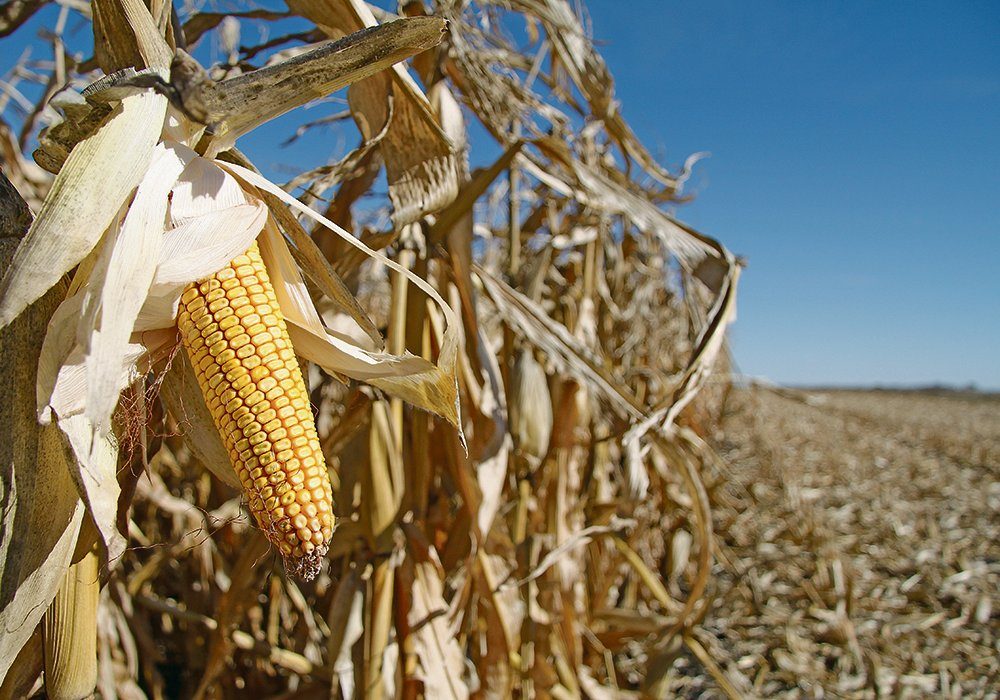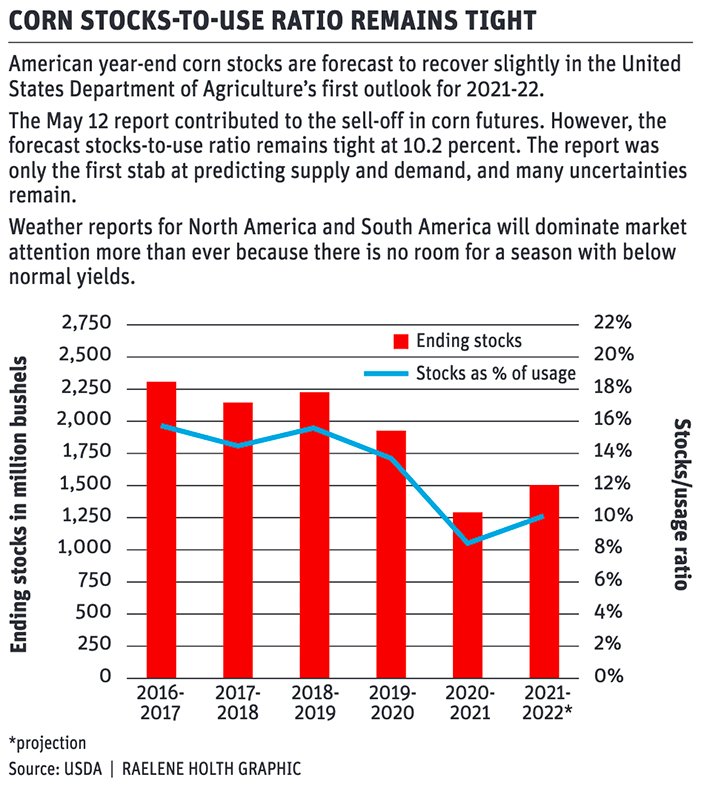Corn market corrects but weather to dictate price future

Every farmer hopes for good yields as they plant their crops but I wonder how many American farmers expect a record yield as they put their corn in this year?
A significant part of the western corn belt has less than normal rain this spring and a big part of North Dakota is in drought, so a record national average of 179.5 bushels per acre seems at this point optimistic.
But that is the yield forecast in the May 12 United States Department of Agriculture monthly supply and demand report.
Several numbers in the report indicated that the grain supply in the coming 2021-22 crop year, while tight, might not be as dire as the current extreme grain shortage.
But in no way did the report show supply will become comfortable and as the report fades in memory and the trade returns its gaze to weather forecasts, prices could again mount a rally if worries increase about dry soil in North America or South America.
The report’s main effect was to give traders a reason to begin the profit taking that had been expected after the huge spring rally that took crop values to record or multi-year highs and placed prices, on a technical analysis, into an overbought position ripe for a correction.
There were sharp declines across all grain and oilseed crops on May 13. On May 14 the decline continued for corn, while wheat dug in and oilseeds managed to claw back a portion of the losses.
Corn fell hardest partly because it had been leading the charge higher this spring.
This report was the first of this year to forecast 2021-22 production, demand and ending stocks.
Based on the recent USDA prospective planting survey, it pegged this year’s corn area at 91.1 million acres with harvested area at 83.5 million acres. Based on the historical trend line, it pegged yield at 179.5 bushels per acre for a crop just shy of 15 billion bu. Once domestic and export demand were accounted for, it predicted 2021-22 ending stocks of 1.507 billion bu., for a stocks-to-use ratio of 10.2 percent, up from the current year 1.257 billion or a very tight ratio of 8.5 percent.
The stocks number was a little higher than what the trade expected, but it is still tight compared to most years.
As mentioned, the production number is based on a record yield of 179.5 bu. per acre, three bushels more than the previous record of 176.6 in 2016.
The historical trend line yield is a based on a formula taking into account the long-term trend of generally rising historical yields and assuming “normal” weather. It is a starting point and can be adjusted up or down in subsequent reports depending on actual weather conditions.
The other variable in production is acreage, and the 91.1 million acre number when it came out in the prospective planting survey report was considered low given the strong rally since the survey was conducted.
The final planted acreage report comes out June 30 and I wouldn’t be surprised if a lot of the trade expects the corn seeded area to come in four or five million acres above what was in the prospective planting report.
Another reason for downward pressure on corn prices was the forecast for rain this week in the Midwest corn belt and the southern Plains.
On the other hand, corn might get support in coming weeks if it remains dry in Brazil, where the second corn crop is in the middle of its growing season.
It has been exceptionally dry in the southern half of the corn region.
Brazil grows three corn crops. The first grows concurrently with the soybean crop, the second and largest crop is planted after soybeans are harvested and there is much smaller third crop in some spots.
The latest USDA report dropped the estimate of Brazil’s total corn production to 102 million tonnes, down from 109 million in the April report.
But I’m seeing an increasing number of social media posts by southern Brazil farmers showing stunted and shrivelled crops that they expect to cut for feed rather than harvest because the yield will be so low.
The publication Soybean and Corn Advisor edited by Michael Cordonnier, who is considered by many to be an expert on South American crops, is lowering its corn forecast even more.
Cordonnier forecasts a total of 97 million tonnes of Brazilian corn and warns that if the drought continues, the worst case would see only 85 million tonnes produced.
Expect traders to be glued to the weather forecasts for Brazil in the coming weeks.
Source: producer.com


